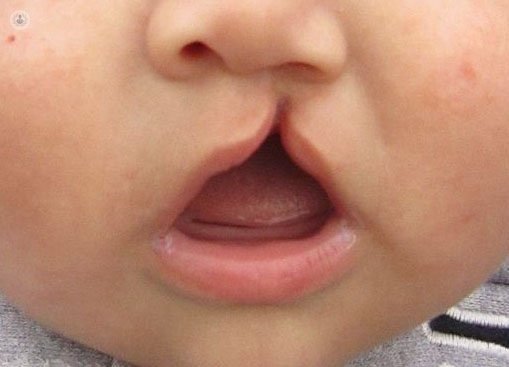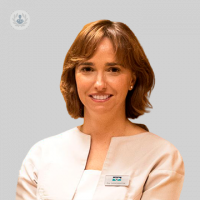Cleft lip and cleft palate: Causes and Treatment
Written by:Both this trait like cleft palate, or a combination of both, occurs during pregnancy: it is congenital, but that does not mean it is always hereditary. It seems that the intake of folic acid during pregnancy can help prevent such defects.
 What are the causes of cleft lip?
What are the causes of cleft lip?
The specialty of dentistry and stomatology working with such congenital malformations. The baby is born with cleft, which is caused between the 5th and 17th week of gestation. During this stage, in the womb, it is where you can alter the correct facial shape and palate. However, it is a multifactorial trait. They may be hereditary, with the alteration of a gene or genes. It can also be caused by a chromosomal abnormality, in which case would be part of a syndrome, as can be "Crouzon syndrome '' or the" Pierre Robin ".
But it can also be caused by environmental factors during the pregnancy of the mother. Certain drugs, including some anti-epileptic, these alterations can be generated inside the uterus. Another example may be a maternal tumor that presses the embryo, and therefore its proper development. Similarly, there has been little relationship between increased maternal age and a slight increase in the incidence of this disease. It seems that the intake of folic acid during pregnancy helps prevent such malformations. In any case, more studies are needed.
Features cleft lip
Importantly, to reassure parents that the child with a variety of cleft lip and palate can have various alterations in different areas of health, but not all of them necessarily manifest in all cases. However, professionals have to take them all into account, to prevent or minimize the negative impact on health:
- Facial alterations in form and aesthetics of the face: a midface less developed in all its dimensions; mandibular deviations; facial asymmetry: cheekbone less developed, a flattened nasal ala ... and facial scars resulting from surgical operations lip seal.
- Occlusal alterations in shape, amplitude of the dental arches and how they relate to each other: that affect how biting and swallowing of the person.
- Dental alterations in shape, color or number of teeth. They may be missing or left over, which is called infecund teeth (when missing) or supernumerary (as spare). Often, a higher incidence of decay appears therefore dental hygiene is important.
- Changes in the muscles of the palate and speech, what we call hyper-nasality in speech: the air goes through the nose when it should not and it sounds different.
- Alterations of the Lingual Function: both swallowing, and at rest;
- Changes in the Hearing: the accumulation of fluid and mucus in the ear; and subsequent repeated infections that this causes.
- Disorders of the muscles around the mouth: very everted lower lip (outgoing) or an upper lip with little mobility due to scar. One way to breathe not adequate, which may entail poor body position.- Changes in body position.
Cleft lip, a multidisciplinary treatment
For the good outcome of the treatment of this disease, it is essential the multidisciplinary approach. Various health professionals must be coordinated: pediatric surgeons, maxillofacial, plastic, micro-surgeons ... In addition to a team of orthodontists, pediatric dentists, prosthodontists, physiotherapists, osteopaths, speech therapists, otolaryngologists, geneticists ... It is also important the work of psychologists or psychiatrists, since there is the possibility of a negative impact on the psycho-social development and self-esteem of the person.
During these treatments is the responsibility of health professionals, the inform patients and their families a real expectations, customized for each case, and always with the hope of visualizing the end of the tunnel.
The patient and family are the focus of this team. The very heart. We must pay attention to their needs individually. Similarly they should seek advice from health professionals, at last we are out of the scientific knowledge we have.


